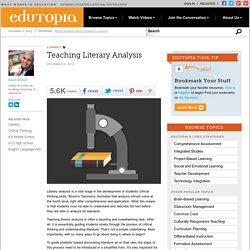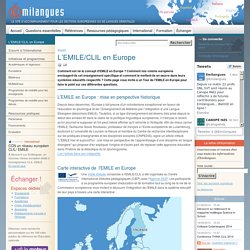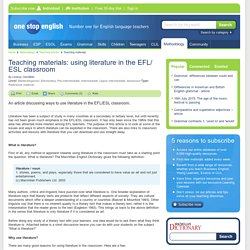Zoom
Trash

Support-document-13-blooms-taxonomy-teacher-planning-kit.jpg 4 809×3 413 pixels. Customised eLearning & Instructional Design. Teaching Literary Analysis. Literary analysis is a vital stage in the development of students' critical thinking skills.

Bloom's Taxonomy illustrates that analysis should come at the fourth level, right after comprehension and application. What this means is that students must be able to understand and describe the text before they are able to analyze its elements. Teaching literary analysis is often a daunting and overwhelming task. After all, it is essentially guiding students slowly through the process of critical thinking and understanding literature. That’s not a simple undertaking. To guide students toward discovering literature all on their own, the steps of this process need to be introduced in a simplified form. 1. Some students need guidance when choosing a topic, but others have ideas that they would like to explore. Characters Themes Literary devices Setting Narrative. 2. The brainstorming process involves mapping out the different aspects of the chosen element. 3. 4.
Introduce Evidence Analyze. Enseigner l’anglais avec des albums d’Anthony Browne. L’EMILE/CLIL en Europe. Comment est né le concept d'EMILE en Europe ?

Comment nos voisins européens envisagent-ils cet enseignement spécifique et comment le mettent-ils en œuvre dans leurs systèmes éducatifs respectifs ? Cette page vous invite à un Tour de l'EMILE en Europe pour faire le point sur ces différentes questions. L'EMILE en Europe : mise en perspective historique Depuis deux décennies, l'Europe a fait preuve d'un volontarisme exceptionnel en faveur de l'éducation bi-/plurilingue et de l´Enseignement de Matières par l´Intégration d´une Langue Étrangère (désormais EMILE). Toutefois, si ce type d'enseignement est devenu très prisé depuis le début des années 90 dans le cadre de la politique linguistique européenne, il n'est pas si récent qu'on pourrait le supposer et l'on peut même affirmer qu'il remonte à l'Antiquité.
Carte interactive de l'EMILE en Europe Une Visite d'étude consacrée à l'EMILE/CLIL a été organisée au Centre international d'études pédagogiques (CIEP) avec l'Agence 2E2F. Teaching materials: using literature in the EFL/ ESL classroom. By Lindsay Clandfield An article discussing ways to use literature in the EFL/ESL classroom.

Literature has been a subject of study in many countries at a secondary or tertiary level, but until recently has not been given much emphasis in the EFL/ESL classroom. It has only been since the 1980s that this area has attracted more interest among EFL teachers. The purpose of this article is to look at some of the issues and ways in which literature can be exploited in the classroom. There are also links to classroom activities and lessons with literature that you can download and use straight away. What is literature? Literature / noun 1. stories, poems, and plays, especially those that are considered to have value as art and not just entertainment (c) Macmillan Publishers Ltd. 2003 Many authors, critics and linguists have puzzled over what literature is. Before doing any study of a literary text with your learners, one idea would be to ask them what they think literature is.
Stage one: warmer.